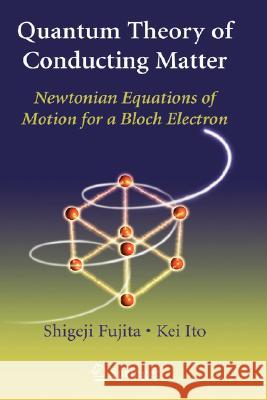Quantum Theory of Conducting Matter: Newtonian Equations of Motion for a Bloch Electron » książka
Quantum Theory of Conducting Matter: Newtonian Equations of Motion for a Bloch Electron
ISBN-13: 9780387741024 / Angielski / Twarda / 2007 / 244 str.
The measurements of the Hall coe?cient R and the Seebeck coe?cient H (thermopower) S are known to give the sign of the carrier charge q. Sodium (Na) forms a body-centered cubic (BCC) lattice, where both R and S are H negative, indicating that the carrier is the electron. Silver (Ag) forms a face-centered cubic (FCC) lattice, where the Hall coe?cient R is negative H but the Seebeck coe?cient S is positive. This complication arises from the Fermi surface of the metal. The electrons and the holes play important roles in conducting matter physics. The electron ( hole ), which by de?- tion circulates counterclockwise (clockwise) around the magnetic ?eld (?ux) vector B cannot be discussed based on the prevailing equation of motion in the electron dynamics: dk/dt = q(E +vxB), where k = k-vector, E = electric ?eld, and v = velocity. The energy-momentum relation is not incorporated in this equation. In this book we shall derive Newtonian equations of motion with a s- metric mass tensor. We diagonalize this tensor by introducing the principal masses and the principal axes of the inverse-mass tensor associated with the Fermi surface. Using these equations, we demonstrate that the electrons ( holes ) are generated, depending on the curvature sign of the Fermi s- face. The complicated Fermi surface of Ag can generate electrons and holes, and it is responsible for the observed negative Hall coe?cient R H and positive Seebeck coe?cient S."











